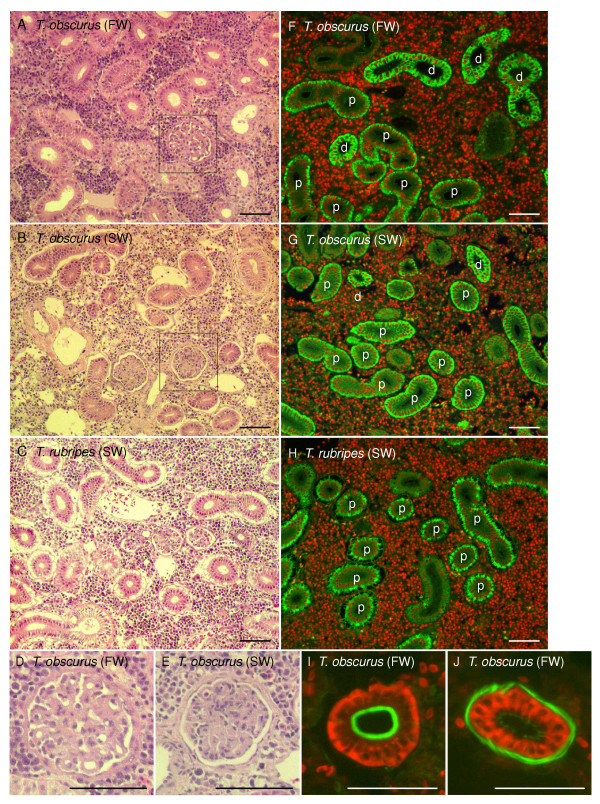Figure 4.

Renal structure of Takfiugu kidneys. A–E. Paraffin-embedded sections of the kidneys of indicated Takifugu species were stained with hematoxylin and eosin and examined for abundance of glomeruli. All the other species, T. niphobles, T. pardalis, T. poecilonotus, and T. porphyreus, also have glomerulous nephron (data not shown). D. Higher magnification view of the glomeruli of FW-acclimated T. obscurus indicated by a box in A. E. Higher magnification views of the glomeruli of SW-acclimated T. obscurus indicated by boxes in B. F–H. Paraffin-embedded sections of the kidneys of indicated Takifugu species were stained with anti-Na+-K+-ATPase (NKA) antibody (green) and Hoechst 33342 (red). NKA antibody strongly stained basolateral surface of proximal segment (p) and entire cell of distal segment (d). T. niphobles, T. pardalis, and T. poecilonotus showed similar result to T. rubripes (data not shown). I–J. Frozen sections of the kidneys of T. obscurus were stained with anti-NKA antibody (red) and Alaxa Fluor 488-labeled phalloidin (green). Phalloidin binds to actin filaments, and strongly stains a well-developed apical brush border of proximal segments. I. Proximal segment of the nephron of T. obscurus. J. Distal segment of the nephron of T. obscurus. All scale bars represent 50 μm.
